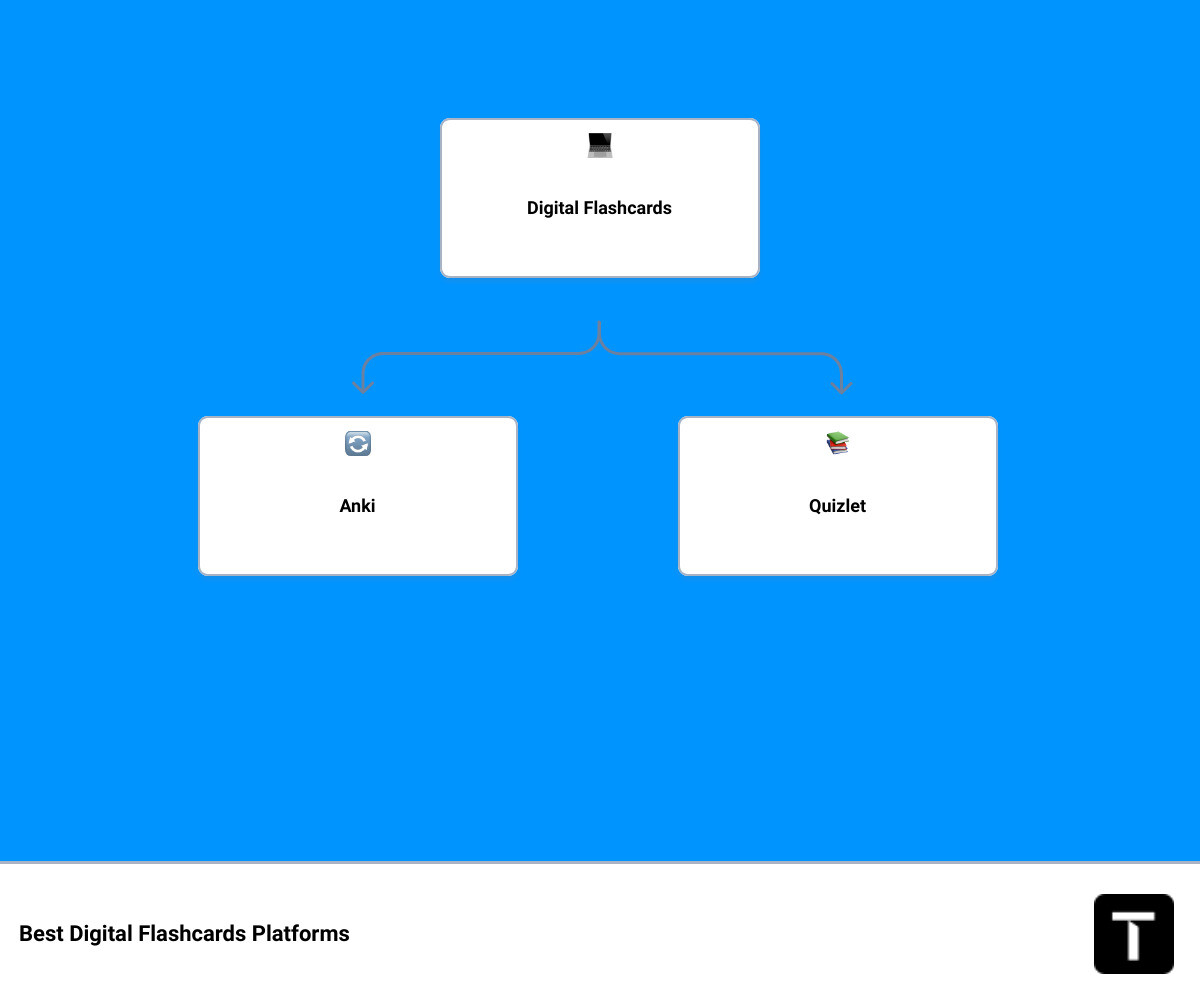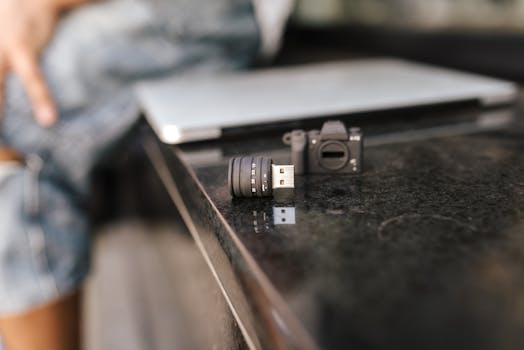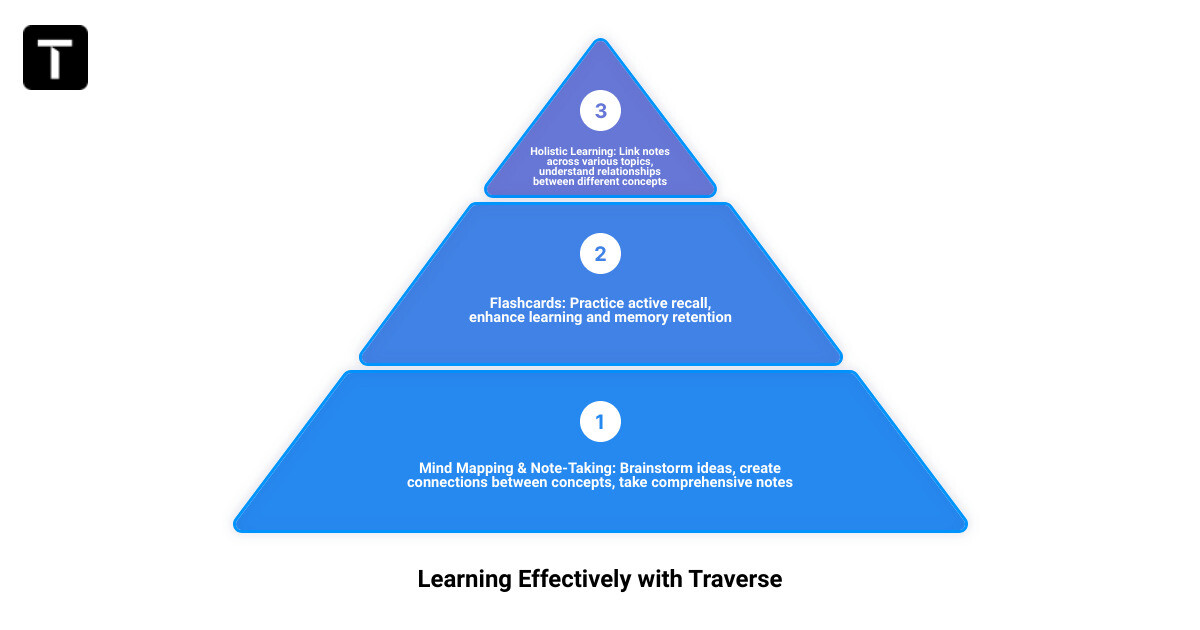Unlocking Success with the right tools can significantly enhance the efficiency and effectiveness of learning. When it comes to mastering vast amounts of information, one such tool that stands out in the digital landscape is digital flashcards. But with a myriad of options available, how do you discern the best digital flashcards that cater to your specific needs and learning style?
In the realm of learning, the humble flashcard has evolved, pairing with technology and cognitive science to become a formidable tool, especially when combined with techniques such as spaced repetition and active recall. Digital flashcards not only provide a convenient and organized way to study, but they also integrate multimedia, stimulating different parts of your brain and promoting better memory retention.
However, not all digital flashcards are created equal. Some platforms offer a more comprehensive approach, incorporating study guides and collaboration features, while others focus on simplicity and ease of use. Certain apps utilize spaced repetition algorithms to optimize learning, while some promote collaborative learning through shared decks.
As we delve into this comprehensive guide, we aim to help you navigate through the sea of options, showcasing the strengths and considerations of popular platforms like Anki, Quizlet, Brainscape, and Cram. Moreover, we'll introduce you to a game-changing learning app that integrates the best features of these platforms - Traverse.
At a Glance: Top Digital Flashcard Platforms
- Anki - Known for its powerful spaced repetition algorithm and highly customizable cards.
- Quizlet - Popular for its simplicity, ease of use, and strong emphasis on shared decks.
- Brainscape - Offers advanced features for tracking progress and ensuring thorough learning.
- Cram - Renowned for its fun and engaging study modes and user-friendly design.
- Traverse - An emerging player integrating the best features of top platforms, taking flashcard learning to the next level.

Join us as we delve into the power of digital flashcards, the science behind them, and how to leverage these tools to unlock success in your learning endeavors. Whether you're mastering a new language, preparing for an important exam, or simply fueling your lifelong learning journey, finding the best digital flashcards can significantly enhance your learning efficiency and memory retention. Let's get started!
The Science Behind Effective Flashcards
Get ready to dive into the fascinating world of cognitive science! By understanding the principles behind successful learning, you can supercharge your study sessions and retain more information. Two key principles that make flashcards so effective are spaced repetition and active recall.
Understanding Spaced Repetition
Think of your brain as a muscle that gets stronger with every repetition. Just as you wouldn't do a thousand push-ups in one go, your brain learns more effectively when study sessions are spread out. This concept, known as the spacing effect, is one of the key principles behind the effectiveness of flashcards.
Spaced repetition is a learning technique that leverages the spacing effect. Here, you revisit challenging information more frequently while reinforcing what you've already mastered. The result? Information is encoded into your long-term memory, making it easier to recall when you need it. Flashcards, when used with a system like the Leitner method, provide an easy yet effective way to implement spaced repetition. This approach involves moving correctly answered cards to boxes with longer review intervals. So, you can focus more on difficult items and less on those you've already grasped.
The Role of Active Recall in Learning
Imagine your brain as an expansive library. The books—information—are stored on the shelves, but finding a specific book—retrieval—can get tricky if the library isn't organized regularly. The process of actively retrieving information from your memory without external cues is known as active recall, and it plays a vital role in the effectiveness of flashcards for studying.
Active recall forces your brain to work harder to retrieve information, strengthening your memory and comprehension. When you use flashcards, you're not just re-reading the information. Instead, you're actively testing your knowledge, recalling information, and reinforcing your memory pathways.
In essence, flashcards are not just pieces of paper or digital cards with information. They're powerful tools backed by cognitive science principles, designed to make your study sessions more productive. As we delve deeper, we'll look at the top digital flashcard platforms that effectively leverage these principles.

In the next section, we'll discuss whether digital flashcards are as effective as their traditional paper counterparts, and what factors influence their effectiveness. Stay tuned!
Are Digital Flashcards Effective?
Have you ever wondered if the hours spent on your laptop or phone, flipping through digital flashcards, really paid off? Well, the answer is a resounding yes, but with a caveat. The effectiveness of digital flashcards, like anything else, depends on how you use them. Here, we'll look at how digital flashcards stack up against their print counterparts and the factors that influence their effectiveness.
Comparing Digital and Print Flashcards
As the world increasingly embraces technology in every aspect of life, it's not surprising that flashcards have made the jump from paper to pixels. But does the digital format enhance or hinder their effectiveness?
The answer is not black and white. In some cases, studies have found that users have shown significant improvements in delayed recall using digital flashcards compared to print. However, these results varied depending on the proficiency level of the user and the type of test administered.
What can be drawn from this is that digital flashcards are at least as effective as their print counterparts, if not more, when used correctly. They offer the convenience of portability, easy editing, and sharing, and the ability to incorporate multimedia elements, such as audio and video, making them a versatile learning tool.
Factors Influencing the Effectiveness of Digital Flashcards
While digital flashcards can be an effective study tool, several factors can influence their effectiveness. Here are some key points to consider:
- Proficiency level: As mentioned earlier, the effectiveness of digital flashcards can vary depending on the user's proficiency. Beginners may benefit more from print flashcards, while more advanced learners may find digital flashcards more beneficial.
- Test type: The type of test administered also plays a role. For example, digital flashcards can be particularly effective for multiple-choice tests that require recognition of the correct answer among several options.
- Usage: The way you use flashcards can significantly impact their effectiveness. Techniques such as spaced repetition and active recall, which are easily implemented with digital flashcards, can boost your learning efficiency.
- Design: The design of the flashcards also matters. Good flashcards challenge your brain and require higher-order thinking. Personalizing the flashcards or visualizing the information can also enhance your retention.
At Traverse, we understand the importance of these factors and have designed our flashcards to maximize their effectiveness. We've incorporated the principles of spaced repetition and active recall into our platform, allowing you to customize your study sessions according to your proficiency level and learning goals.
In the next section, we'll look at some of the best digital flashcard apps available and how they leverage these principles to help you study smarter, not harder. So, stay tuned!

Top Digital Flashcard Apps
As you delve deeper into your learning journey, choosing the right tools to aid you can make all the difference. Let's explore some of the top digital flashcard apps that are transforming the way we study.
Anki: The Power of Spaced Repetition

An undisputed king in the flashcard app world, Anki stands out for its powerful utilization of spaced repetition. This feature allows you to tag cards as easy or hard, enabling the app to prioritize difficult cards to appear more frequently. This maximizes retention and minimizes wasted time. The app is a bit complex to set up but offers robust features like adding images and audio to your cards, customizing your personal learning experience.
Anki is particularly favoured by hardcore learners who prefer high levels of customization and control over their study sessions. Despite its somewhat clunky interface, its ability to share decks and download others promotes collaboration among learners. Anki is free to use on desktop and Android versions, but the iOS app comes with a price tag of $24.99.
Quizlet: Simplicity and Versatility
For those seeking a straightforward, easy-to-use flashcard experience, Quizlet is a strong contender. Unlike Anki, Quizlet does not support spaced repetition, but it compensates for this with its strong focus on shared decks. This allows you to use pre-made decks based on common coursebooks, making it incredibly user-friendly. However, it's crucial to avoid the trap of relying solely on shared decks and ensure you're actively involved in the encoding process.
Brainscape: Advanced Progress Tracking
Brainscape brings spaced repetition into play but steps it up a notch with its advanced progress tracking. The Brainscape system is simple on the surface but contains advanced features to ensure you've thoroughly learned the information. However, to add images and sounds to your cards, you'll need to upgrade to the Pro version, which starts at $9.99 per month.
Cram: Fun and Engaging Study Modes
Emphasizing enjoyment in the learning process, Cram offers an engaging experience with its fun and interactive study modes. This feature, combined with its vast database of pre-made flashcards, makes Cram a popular choice among students. Unfortunately, Cram did not make our top 5 list, but we thought it was worth mentioning due to its unique study modes and user-friendly interface.
IDoRecall: Perfect for Academic Material
If you're studying academic material, IDoRecall might just be your perfect match. This app allows you to create flashcards directly from your notes or textbooks, making it particularly useful for academic learning. The app also uses spaced repetition to ensure you review information just when you're about to forget it, ensuring a more efficient study session.
These apps, with their varied features and functionalities, cater to different learning styles and needs. Yet, they all share a common goal – to make studying more efficient and effective. But what if there was a tool that could take this further, combining the power of flashcards with note-taking and mind mapping capabilities? That's where we come in. At Traverse, we have developed just such a tool, and we can't wait for you to try it out in the next section.
How to Make the Most of Digital Flashcards
When it comes to memory recall and knowledge absorption, not all flashcards are created equal. Let's delve into the art of creating effective flashcards and strategies that can enhance your learning experience.
Creating Effective Flashcards
To harness the full potential of digital flashcards, you need to ensure they are well-crafted. The content and design of your flashcards can significantly impact their efficacy. Here's how to make good flashcards:
1. Use Higher-Order Thinking: Flashcards should not just regurgitate facts. They should challenge your mind and promote active recall. For instance, instead of simply asking for a definition, a flashcard could present a hypothetical scenario that requires you to apply the concept at hand. The more your brain works to find the answer, the better you'll retain the information.
2. Personalize the Information: Connect the information to something relevant to you. Making a flashcard personal can make it more enjoyable and easier to remember. As we humans tend to remember information better when it's related to ourselves, personalizing your flashcards can significantly boost their effectiveness.
3. Use Visuals: The human brain processes visual information faster than textual data. Therefore, adding visual elements like images or color coding can improve your memory retention and make learning more enjoyable. You could use image occlusion where you blur out the part of the image you want to remember, forcing your brain to recall the missing information.
4. Be Consistent: Consistency in the phrasing and design of your flashcards can help prevent confusion. Consistent prompts yield consistent answers, thereby lighting the same "lightbulbs" in your brain every time you review them.
5. Keep it Neat: A neat, logically organized flashcard is easier to understand and remember. Take some extra time to arrange your flashcards in a way that mirrors your thought process. This not only makes the learning process smoother but also reduces the number of repetitions required to master the information.
Strategies for Using Flashcards Effectively
Now that you have your well-structured flashcards, let's look at some strategies for using them effectively:
1. Employ Spaced Repetition: As we've discussed in a previous section, spaced repetition is a powerful technique for long-term knowledge retention. Review your flashcards at increasing intervals, focusing more on the ones you find challenging, and less on those you already know well.
2. Mix up Your Study Sessions: Avoid focusing on one topic for too long. Instead, shuffle different topics and types of questions within a study session to keep your brain active and engaged.
3. Active Recall is Key: Make sure to actively recall the answer from your memory before revealing it on the flashcard. This engages your mind more deeply and reinforces neural pathways, aiding in better information retention.
4. Review Regularly: Regular review is critical to keep the information fresh in your mind. Spaced repetition apps like Anki can help manage this by determining optimal review times based on your performance.
5. Break Down Complex Concepts: If a topic is too complex, break it down into smaller, easier-to-understand parts and create a series of flashcards for each part. This can make the learning process less overwhelming and more manageable.
By implementing these strategies in your study routine, you can maximize the benefits of digital flashcards and take your learning to the next level. Stay tuned for the next section where we will introduce you to Traverse, our innovative tool that combines the power of flashcards with mind mapping and note-taking capabilities.
Traverse: The Future of Digital Flashcards
The future of digital flashcards is already here, and it's called Traverse. As the cutting-edge platform in the field of learning apps, Traverse is revolutionizing the way we study and learn by seamlessly combining mind mapping, flashcards, and note-taking into a single, comprehensive solution.
Combining Mind Mapping, Flashcards, and Note-Taking
Imagine having a single tool that allows you to brainstorm ideas, create connections between concepts, take comprehensive notes, and review your knowledge using flashcards. Well, you don't have to imagine it anymore – Traverse makes this a reality.

Traverse's innovative approach to learning incorporates the principles of spaced repetition and active recall, which are scientifically proven to enhance learning and memory retention. By integrating these effective learning strategies with note-taking and mind mapping, Traverse provides a powerful, unified platform for mastering complex topics and retaining knowledge long-term.
Learning Effectively with Traverse
Beyond being a robust flashcard app, Traverse is designed to help you learn more effectively and efficiently. With its interconnected note-taking feature, you can easily link notes across various topics. This not only makes studying more organized, but it also helps you to establish and understand the relationships between different concepts, making your learning more holistic and meaningful.
Traverse also employs a science-based approach to learning. The platform is designed to adapt to your learning pace and style, ensuring that you spend the most time on topics you find challenging and less time on those you've already mastered.
Furthermore, the app's design encourages active learning. Instead of passively reading through notes, users are prompted to interact with the material, reinforcing their understanding and memory of the topic.
At Traverse, we recognize that every learner is unique. Therefore, we strive to offer a versatile and personalized learning experience that accommodates a variety of learning styles and needs. So whether you're a medical student mastering complex terminologies, a machine learning researcher delving into intricate algorithms, or a language learner trying to grasp a new vocabulary, Traverse is equipped to assist you in your learning journey.
To conclude, Traverse is not just another flashcard app. It is a comprehensive learning platform that combines the best of flashcards, note-taking, and mind mapping, all backed by the principles of cognitive science. Unlock your full learning potential and achieve your academic and professional goals with Traverse - the future of digital flashcards.
Conclusion: Choosing the Best Digital Flashcards for Your Needs
Unlocking the treasure chest of knowledge has never been easier with digital flashcards. As we've traversed through the landscape of the best digital flashcards, we’ve seen how they can supercharge memory and understanding, whether you’re a casual learner or a dedicated student. However, the key to reaping their full benefits lies in choosing the one that best aligns with your learning style and needs.
Anki, with its advanced spaced repetition algorithm and high customizability, is a solid choice for serious students who prefer having control over their study regimen. Quizlet is a user-friendly option for learners seeking a simple and straightforward flashcard experience, while Brainscape appeals to individuals who appreciate comprehensive progress tracking. On the other hand, Cram offers fun and engaging study modes, making it ideal for those who like to keep their study sessions lively. For academic material, IDoRecall provides optimal support with its focus on recall-based learning.
But what about the learners who want all of these features in one place? What about those who not only want to study but also want to enjoy the process and make it an integral part of their lifestyle?
That's where Traverse comes in. At Traverse, we believe that learning should be a fulfilling journey, not a chore. We’ve combined the best features of the top digital flashcard platforms, integrated them with mind mapping and note-taking tools, and developed a unique, scientifically-backed learning system. Our platform is designed to cater to your individual learning style and needs, helping you learn more effectively and retain information longer.
Remember, the best digital flashcards for you are those that match your learning style, meet your study goals, and fit into your lifestyle seamlessly. But beyond that, they should be tools that you enjoy using, that inspire you to learn more, and that support you on your lifelong learning journey.
So, are you ready to unlock success with the best digital flashcards? Try Traverse today and experience the future of digital learning!

